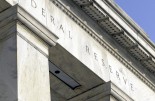Han Dieperink: A year with two faces
Han Dieperink: A year with two faces

This column was originally written in Dutch. This is an English translation.
By Han Dieperink, written in a personal capacity
The financial markets seem to be experiencing a major contradiction. While prices are at record highs, concerns about the economic and geopolitical situation are being voiced from various quarters. Stocks are trading at all-time highs, house prices continue to rise, and gold has experienced a strong rally. The rising gold price symbolizes the proverbial "wall of fear" that every rising market must climb.
Market recovery after volatile first half of the year
The first half of 2025 was marked by significant market volatility. The realized volatility of 49 in April has only been exceeded a few times in history—think of months like October 1987 or March 2000. Trade uncertainty and geopolitical tensions caused major price swings. Still, recent data shows that earnings growth is no longer limited to large technology stocks.
Corporate earnings bottomed out in October 2023, precisely when financial conditions began to improve as the U.S. 10-year yield peaked around 5%. Since then, earnings per share have risen. This broadening of earnings growth underpins today’s record highs. The market is now pricing in a 14% earnings increase for the S&P 500 over the next 12 months.
U.S. labor market: controlled cooling
A crucial development is the gradual cooling of the U.S. labor market. The three-month average of job creation has fallen to just 35,000 new jobs. While this raises questions about economic health, it needs to be put in perspective.
Growth in consumer spending power is a better indicator than employment growth alone. The combination of resilient hourly wages and stable working hours offsets the slowdown in job growth. Moreover, jobless claims have declined sharply. This supports the view that companies have deliberately slowed hiring due to trade uncertainty. In addition, government layoffs as part of Elon Musk’s cost-cutting drive play a role.
Federal Reserve gains room for rate cuts
This controlled cooling gives the Federal Reserve room for measured rate cuts. Inflation has fallen spectacularly, achieving a soft landing without recession.
The key point is that the Fed will implement measured easing to support expansion—not as a panic response. This echoes the late 1990s, when the Fed cut rates during the dot-com productivity boom. The current profit cycle shows no signs of turning.
Trump policy: bitter first, sweet later
U.S. policy has two distinct phases. The first phase was marked by the “bitter” part: trade tariffs and immigration restrictions. Tariff moderation has been limited, as the White House so far sees little downside to the levies.Tariff revenues have thus been higher than expected. This gives the U.S. government political space for the “sweet” part that now follows: lower taxes and deregulation, partly driven by the Midterm elections.
So far, companies have absorbed tariffs rather than passing them on to consumers, but this may change. Over the long term, tariffs are generally non-inflationary and act as a tax on consumers.
Artificial intelligence: an undervalued revolution
One factor underestimated by financial markets is the breakthrough of artificial intelligence. Both the scale and the speed of AI implementation are systematically undervalued. AI benefits from government support and is seen as a long-term driver of productivity.
Sectors related to energy generation and network infrastructure continue to invest. Both Democrats and Republicans support nuclear energy and agree that the U.S. needs cheap, reliable energy to stay competitive in high-tech industries.
Record levels in perspective
Critics point to the many “all-time highs”: market capitalization, money supply, government debt, housing prices. However, this perspective misses essential context. GDP, disposable income, total wealth, revenue, earnings, and wages are also at record levels. The fact that earnings and profit margins are rising makes the likelihood of valuations declining particularly small.
Government debt is indeed at an all-time high, but the same could be said for almost every year over the past 25 years—while interest rates steadily declined. The same goes for housing prices: they are at record levels, yet millions of homes are still lacking. The supply shortage explains the price pressure.
Outlook: more records likely
The combination of a cooling labor market and controlled inflation gives the Federal Reserve room for rate cuts, while earnings growth is broadening. The Fed may cut rates up to three more times this year.
Trade uncertainty is fading into the background. Increasingly, companies see import tariffs as manageable. With strong business fundamentals, room for monetary easing, and an undervalued AI revolution, new records seem not only possible but likely. Today’s concerns are usually a prelude to even higher levels in the coming months.







